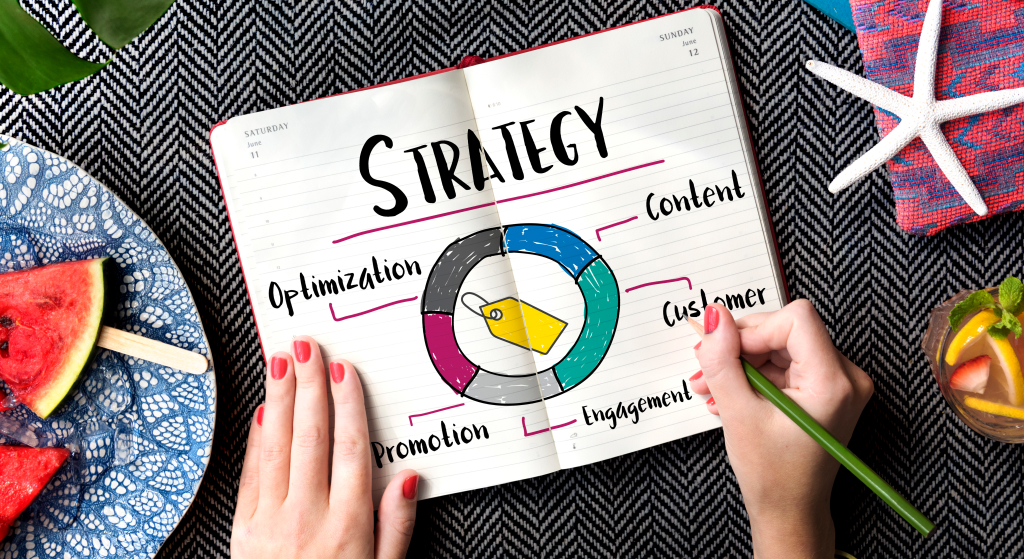
How to Keep Your Content Fresh and Updated: A Comprehensive Guide
Greetings, digital aficionados! In the vast universe of the internet, where information is continuously sprouting like mushrooms after a spring rain, there's a need—a hunger—for Content Freshness. Wondering why your content should evolve with time? Buckle up as we journey through the digital realm to explore the essence of freshness and the transformation of information.
The Importance of Content Freshness in Today's Digital Age
In an age dominated by search engines, staying on top of the digital food chain requires strategy. And guess what's a massive part of that strategy? Yep, you guessed it—Content Freshness. Fresh content is akin to a daily news update. Old news is quickly forgotten, while the latest tidbits become the talk of the town. Search engines are the town criers of this digital era, prioritizing fresh, updated, and relevant content to present to its curious audience.
Overview of Key Concepts in Content Updating
You might ask, "Isn't creating new content enough?" Well, not quite. Updating isn't always about creating something from scratch. Often, it's about adding new perspectives, insights, or relevant data to what already exists, making it more valuable and engaging for your readers.
Understanding the Basics
What is Content Freshness? Difference between Fresh Content and Content Freshness
Let's get this straight: Fresh content is the new stuff—the latest articles, videos, or graphics you put out. On the flip side, content freshness revolves around rejuvenating what's already there. Think of it as renovating an old house—keeping the foundation but maybe knocking down some walls and adding a fresh coat of paint.
The Connection between Content Relevancy and Website Traffic
It's simple math. When your content aligns with current trends, interests, and the ever-evolving needs of the digital populace, you attract more eyeballs. Think of the web as a giant sea and your content as the bait. The fresher and juicier your bait, the more fish you attract.
The Role of Evergreen Content
Evergreen Content—content that's always relevant—is like the tree that stands tall through all seasons. Whether it's a how-to guide, a foundational article, or a timeless tutorial, evergreen content remains pertinent. But even the sturdiest trees need some pruning. By updating these pieces with the latest insights or data, you ensure they continue to thrive and attract readership.

Strategies to Maintain Fresh Content
Regular Content Audits
Why Content Audits are Essential
Without reflection, there's no progress. Auditing is the mirror that reflects the state of your content. It's your roadmap, highlighting the pitstops, detours, and highways of your content journey. An audit reveals which content pieces are gold mines, which are dead weights, and which ones need a touch of sparkle.
How to Conduct an Effective Content Audit
Begin with an inventory: list all your content pieces, from blogs to videos. Use analytics to measure performance, see user engagement levels, and identify the stars and the underperformers. Based on these insights, strategize on revamping, removing, or rejuvenating content.
SEO Content Updating Best Practices
Importance of SEO in Content Freshness
Remember, SEO isn't just about plugging in popular keywords. It's about rhythm, relevance, and resonance. With evolving user search patterns, aligning your content with current SEO trends isn't a luxury; it's a necessity.
Techniques to Align Content with SEO Updates
Keep up with SEO communities and forums. Regularly check in with tools like Google's Keyword Planner and Trends. And most importantly, craft content that answers today's questions, not yesterday's.
Tips for Repurposing Content
Ways to Repurpose Old Content
Old is gold, but sometimes, gold needs polishing. Turn that 2018 blog post into a snazzy 2023 infographic. Or take the insights from an article and transform them into a podcast episode.
Benefits of Repurposing in Ensuring Content Relevance
It's all about reaching a wider audience. Different people consume content differently. By repurposing, you're casting a wider net, ensuring your content resonates with varied audiences.
Techniques for Updating Old Content
In the ever-evolving digital landscape, resting on your laurels isn't an option. Old content, no matter how brilliant at its inception, might need some sprucing up to stay relevant. But how do you give it the necessary facelift? Let's delve in!
Content Optimization Strategies
Enhancing On-page SEO Elements
The beauty of the web is that it's dynamic. However, this also means that the factors affecting your search ranking are always shifting. Refresh your meta descriptions, reevaluate your keyword density, and ensure that alt texts on images are accurate. These small tweaks can significantly impact how search engines perceive your content's relevancy.
Using Multimedia to Improve Freshness
Spice things up! Gone are the days when articles were pure text. Add infographics, embed relevant videos, or even sprinkle in some GIFs to engage your readers more. Multimedia elements can breathe new life into an old post, making it more shareable and engaging.
Website Content Refresh Approaches
When and How to Refresh Your Website's Content
Refreshing your content isn't about change for change's sake. It's a strategic move. Maybe there's a significant update in your industry, or perhaps new research has come to light. Set a calendar reminder every few months to review and refresh content pieces that could benefit from an update.
Tools to Help with Content Refresh
Several tools can aid in the process. Platforms like BuzzSumo can show what content is trending in your niche, while Google Analytics can highlight the performance of your existing content, pointing out which ones may need an overhaul.
Keeping Content Relevant to Your Audience
Understanding Audience Needs and Preferences
Engage with your readers. Run polls on your social media, encourage comments on your blogs, and ask for feedback. Knowing what resonates with them and what falls flat can inform your content refresh strategy.
Making Timely Updates based on Feedback and Trends
Your audience's feedback is gold. If they're pointing out outdated information or expressing a need for clarity on certain topics, take it to heart. Pair this with keeping a tab on industry trends to ensure your content remains a go-to resource.

Planning for the Future: Content Strategy Update
Crafting content isn't just about the here and now. Like a chess grandmaster, you should be thinking several moves ahead. Future-proofing your content and staying updated ensures that your content remains pertinent and doesn't get lost in the vast sea of the internet.
The Ongoing Need for Content Update
In a rapidly evolving digital world, what's relevant today might be old news tomorrow. Consider the rate at which new research emerges, trends shift, and innovations unfold. It's not enough to simply keep pace; you should be anticipating. Recognize that the need for Content Update isn't a seasonal affair. It's a year-round commitment, ensuring your audience always has the latest and best from you.
Implementing a Regular Update Schedule
Consistency is king. While sporadic updates might offer short-term gains, a regular update schedule ensures long-term success. Think of it as routine maintenance for a vehicle. To keep running smoothly, you need regular check-ups.
Set aside dedicated times: Block out chunks of time in your calendar exclusively for content review. This proactive approach prevents your content from going stale.
Use technology: Tools like content calendars, reminder apps, and content management systems can automate reminders, ensuring you never miss an update.
Aligning Content Strategy with SEO and Audience Dynamics
Just as a sailor constantly adjusts to the wind's direction, a content creator must adapt to changing SEO algorithms and audience preferences.
Stay educated: Join webinars, read up on SEO updates, and engage in digital communities. The more informed you are, the better equipped you'll be to navigate changes.
Feedback loops: Regularly solicit feedback from your audience. This two-way communication can provide invaluable insights, allowing you to refine your content to better serve their needs.
Conclusion
The Overall Impact of Fresh Content on Website Traffic and SEO
Freshness isn't just a buzzword—it's a lifeline in the digital world. Websites that prioritize freshness and regular updates invariably see better engagement, longer on-site times, and, most importantly, improved SEO rankings. Fresh Content becomes a beacon, signaling to search engines and readers that your platform is a hub of current and valuable information.
Encouragement to Continually Prioritize and Evaluate Content Freshness
In conclusion, let your content age like fine wine, not stale bread. Regular evaluations, updates, and a commitment to staying on the pulse of industry trends will ensure your content remains evergreen, engaging, and effective.
References
- Sullivan, D. (2021). "The Periodic Table of SEO Success Factors." Search Engine Land.
- Patel, N. (2022). "The Step-by-Step Guide to Conducting a Content Audit." Neil Patel Digital.
- Enge, E., Spencer, S., Stricchiola, J., & Fishkin, R. (2020). "The Art of SEO: Mastering Search Engine Optimization." O'Reilly Media.
 Mark Petrenko
Mark Petrenko 
